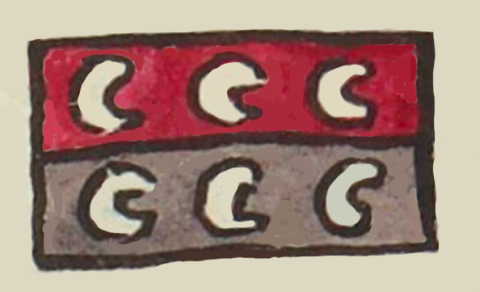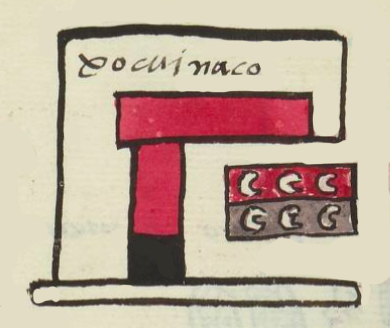Xocuinanco (MH687v)
This painting of the simplex glyph for the place name Xocuinanco shows a red, white, and black rectangle inside a house or building (calli). The rectangle has two divisions, both horizontal. The upper stripe is red, and the lower one is dark gray. Inside each of these two stripes are three white crescent shapes (C-shapes).
Stephanie Wood
The house that surrounds this glyph sends the message that the glyph inside represents a place name, and Xocuinanco is interpreted to be a barrio (a Spanish designation) of Coyotzinco. The glyph, however, is obscure. It looks something like a representation of a tlalli (agricultural parcel), as the glyphs below with their rectangles and C-shapes might attest. Further research is required. In trying to analyze the gloss, words starting with Xo- might have something to do with feet. If the -cuinanco were -chinanco (from chinamitl and inadvertently misspelled?) then the idea of the visuals representing an agricultural field might be viable.
Stephanie Wood
xocuinaco
Xocuinanco
Stephanie Wood & Jeff Haskett-Wood
1560
Jeff Haskett-Wood
nombres de lugares, rectángulos, sementeras

Matrícula de Huexotzinco, folio 687v, World Digital Library, https://www.loc.gov/resource/gdcwdl.wdl_15282/?sp=455&st=image.
This manuscript is hosted by the Library of Congress and the World Digital Library; used here with the Creative Commons, “Attribution-NonCommercial-ShareAlike 3.0 License” (CC-BY-NC-SAq 3.0).




